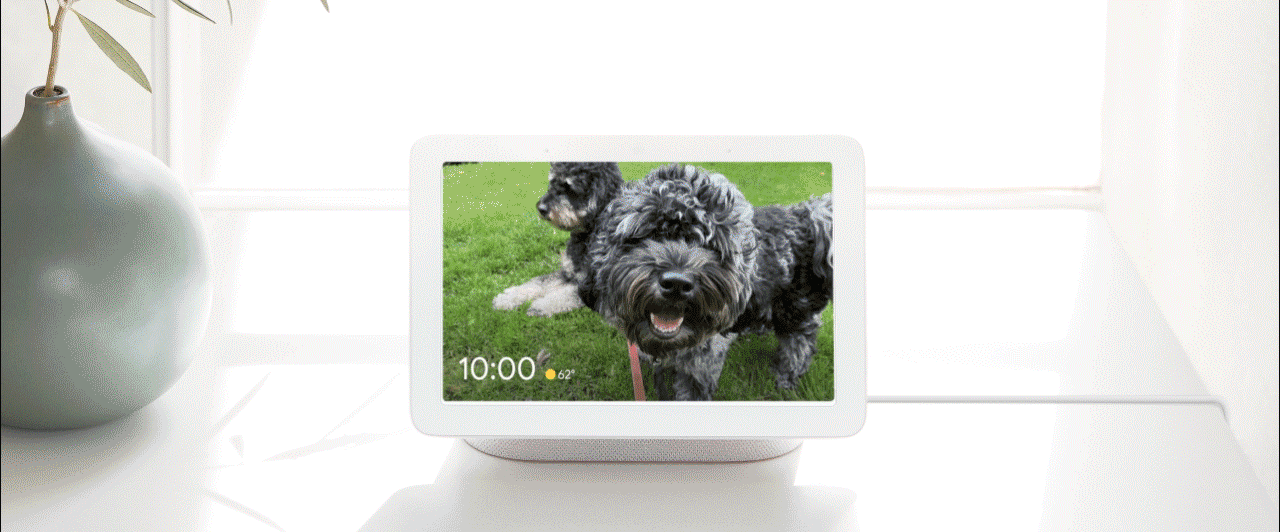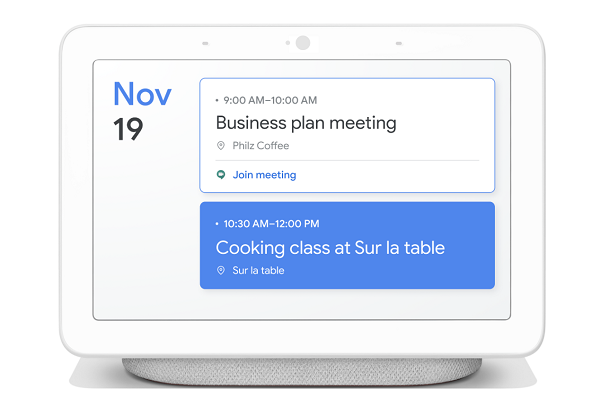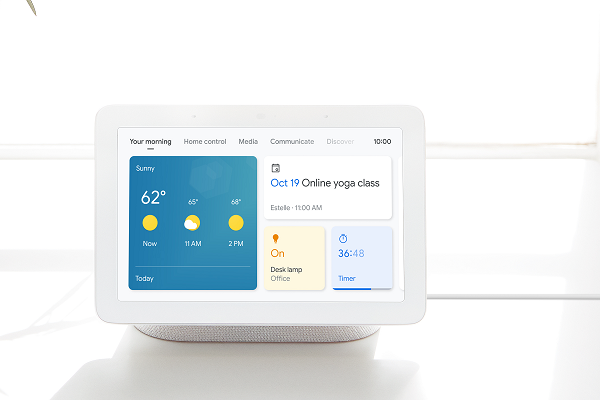Google Assistant Upgrades Smart Displays with Multiple Account Access and New Interface
 Google Assistant-powered smart displays now support multiple accounts and a new interface as part of a package of updates. The new abilities mark the first major upgrade in Google’s smart display software since the first one debuted in 2018.
Google Assistant-powered smart displays now support multiple accounts and a new interface as part of a package of updates. The new abilities mark the first major upgrade in Google’s smart display software since the first one debuted in 2018.
Multiple Accounts, One Display
The Google Nest Hub, Lenovo Smart Clock, and other smart displays using Google Assistant have used a row of cards to show recommendations since their inception. Now, swiping left on the display will pull up a series of tabs divided into sections like Media, Communicate, Discover, Home Control, and Your Morning. Each tab holds pretty much what you would expect, with Entertainment offering audio and visual content like the recently added Disney+ streaming service. The Your Morning tab incorporating local weather and personal updates, while Discover shares ideas on features and orders to give the voice assistant that the user might be interested in trying.
 The personalized updates aren’t limited to just one account, either. Multiple accounts connected to different email addresses can integrate into the display. That way, if you have work and home email accounts, the smart display can show everything in one place, with reminders updating automatically during the course of the day. Having multiple accounts in one spot applies beyond just smart displays, as any smartphone with Google Assistant can now do the same, but it’s the smart display where all of the features come together.
The personalized updates aren’t limited to just one account, either. Multiple accounts connected to different email addresses can integrate into the display. That way, if you have work and home email accounts, the smart display can show everything in one place, with reminders updating automatically during the course of the day. Having multiple accounts in one spot applies beyond just smart displays, as any smartphone with Google Assistant can now do the same, but it’s the smart display where all of the features come together.
“As we expect more of our smart home devices, Smart Displays are increasingly becoming a hub that entertains and connects the whole home and whole family, all day (and night) long,” Google explained in a blog post about the update. “If you have separate personal and work accounts, you can now set up multiple accounts on Google Assistant devices to see and interact with all of your upcoming events and meetings in one place—without having to switch between your personal or work account.”
Communicate In View
The other major updates relate to the Communicate tab. The option to call people, broadcast messages to other devices, or start a meeting have all been moved under that heading. Google Assistant added new commands to it as well, allowing users to cancel and reschedule Google Meet meetings and send notes to the participants. Once the Meet call starts, those on a smart display will soon be able to adjust the grid view manually for the first time, pulling up individual callers or presentations by zooming in like on a smartphone screen. It’s not clear if Google Duo or the soon-to-arrive Zoom will have the same visual adjustment options. For Meet video calls on the Google Nest Hub Max, there’s an additional feature whereby the camera will automatically frame the user and keep them centered in the screen if they move around the room.
The new features go well with the new tools Google debuted during Google Assistant Developer Day like new intent domains and household authentication tokens. The simplified format and other additions will likely help Google compete as smart displays become more sophisticated. The auto-framing, for instance, is in direct contrast with the similar feature in the new Amazon Echo Show 10, which uses Alexa to identify and track whoever is using it, swiveling on its stand to follow them around the room during calls. keeping the user in view even as they move around the room. It’s a jump ahead of Google and Facebook’s own tracking software, which requires a user to stay in the frame of the camera to adjust focus on them. On a practical level, the feature means someone on a video call can walk around a room while still being on-camera
Follow @voicebotai Follow @erichschwartz
New Google Assistant Developer Tools Promise Better Discovery and Smart Display Visuals
The New Amazon Echo Show 10 Streams Netflix While Following You Around the Room
Google Assistant Jumps into Samsung TVs, But Bixby Isn’t Going Anywhere









